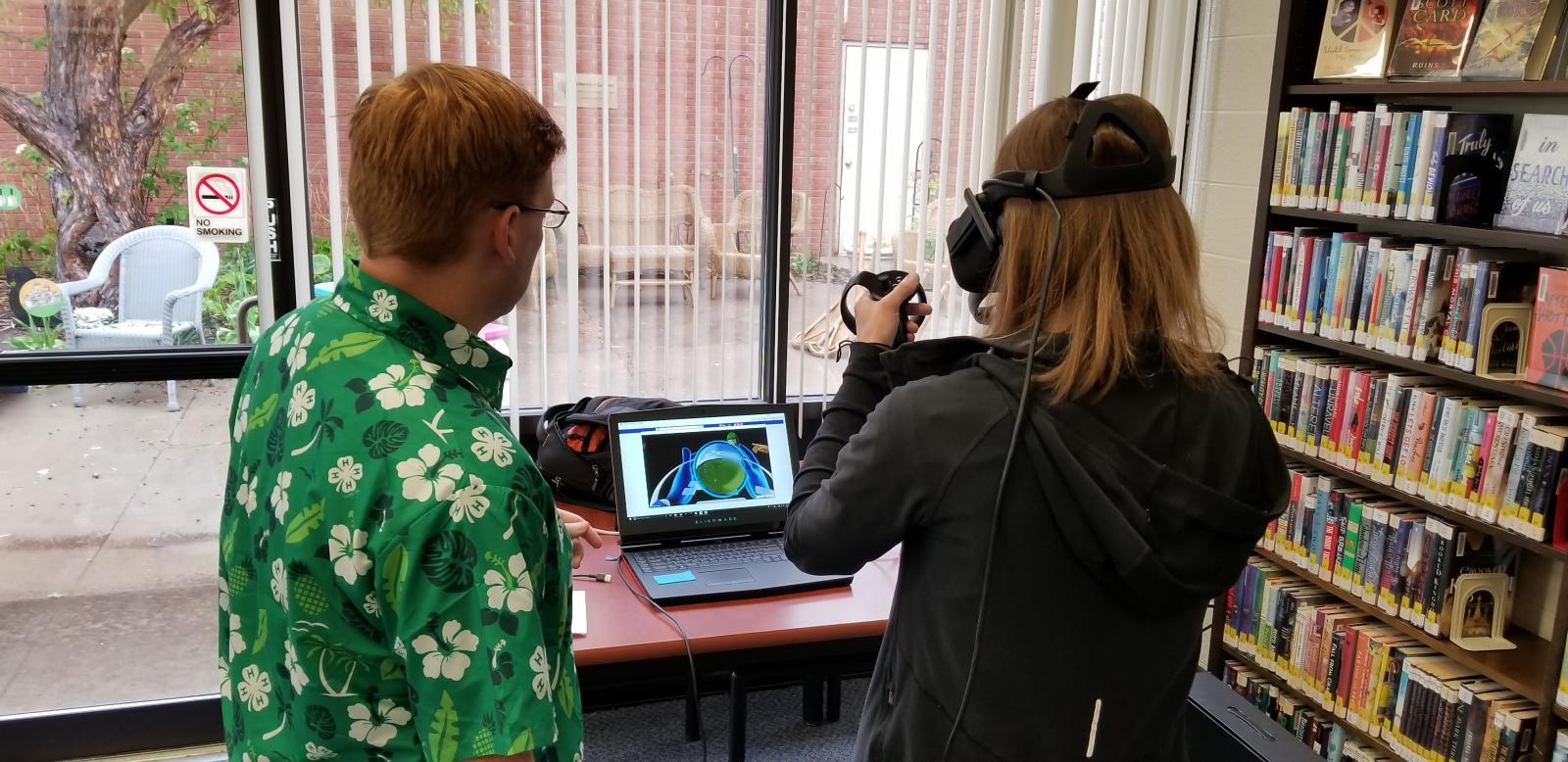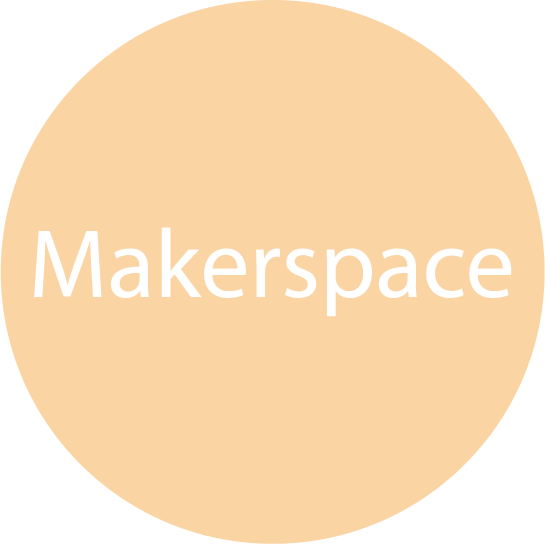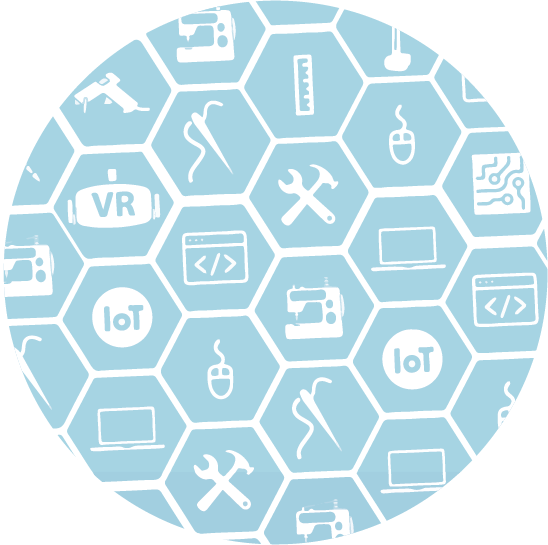The NiMC Project
The physical makerspace is an important gathering point for tools, projects, mentors/experts which enables a rich learning environment. In this exploratory project, we advance a high-risk model of connectedness and social innovation using two main strategies: virtual collaborative spaces and robotic telepresence, to provide rural youths and their communities access to the Maker Movement. The purpose of the virtual innovation space is to provide opportunities for teams of youth and mentors to collaborate regardless of geographic location and to creatively problem solve and innovate. The second component of the model utilizes telepresence robotics for more focused one-on-one collaboration with experts and mentors in the physical Makerspace.
Activities
Opportunities to tinker and build skills support youth's ability to build self-efficacy and agency in a makerspace.
Community
The community infrastructure includes the physical makerspace as well as virtual, online, and in-person resources.
GET INVOLVED
The NiMC project is a community driven project that is only possible when community members coalesce around the vision of making in rural communities. Community action teams may consist of but are not limited to local library staff, UNL Extension faculty, business and industry representatives, government representatives, teachers and students, as well as members of the public with a passion for making. Once your team is ready, UNL and the NiMC team can help you establish your space.
The NiMC Project
 The Nebraska Innovation Maker Co-Laboratory (NIMC) project, funded by NSF, will advance efforts of the Innovative Technology Experiences for Students and Teachers (ITEST) program to better understand and promote practices that increase students' motivations and capacities to pursue careers in fields of science, technology, engineering, or mathematics (STEM). The project will design, develop and test a Makerspace engagement model that connects geographically dispersed learning communities and mentors participating in Maker activities and spaces to provide informal STEM learning pathways and to broaden participation for STEM activities for youth and their community.
The Nebraska Innovation Maker Co-Laboratory (NIMC) project, funded by NSF, will advance efforts of the Innovative Technology Experiences for Students and Teachers (ITEST) program to better understand and promote practices that increase students' motivations and capacities to pursue careers in fields of science, technology, engineering, or mathematics (STEM). The project will design, develop and test a Makerspace engagement model that connects geographically dispersed learning communities and mentors participating in Maker activities and spaces to provide informal STEM learning pathways and to broaden participation for STEM activities for youth and their community.
The project will establish a dedicated public library-based Makerspace in a rural, relatively isolated and underserved community with close connections to an anchor space at the University of Nebraska-Lincoln that supports open-ended, self-directed learning, idea exploration, technical skills, entrepreneurship, and collaborative projects. The project design will bring together experts from a wide variety of fields (e.g., engineering, textiles, photography, robotics, and STEM education) to provide youth with hands-on opportunities in six focus areas, electronics, textiles including e-textiles with wearable electronics, computers, digital media creation, music technology, and digital fabrication. Youth will select a project and learning pathway based on their interests. Youth will then complete mini-courses and receive certification on the equipment and skills relevant to their chosen project. The expected synergy between virtual collaborative spaces and robotic telepresence will provide opportunities for teams of youth and mentors to collaborate regardless of geographic location and to creatively collaborate, problem-solve, and innovate.

This project focuses on using virtual collaborative spaces and robotic telepresence to provide rural youth access to the Maker movement. This model will provide a replicable strategy of reaching rural underserved youth audiences within their communities so that they may establish wider learning communities with experts and mentors and thereby fully participate in the maker experience. The use of telepresence robotics for focused one-on-one collaboration and guidance in the Makerspace will particularly help to address the physical needs of such mentoring. Virtual innovative lab spaces will allow youth to develop project ideas and engage in collaborative problem-solving. The spaces will be accessible via mobile phone-based Head-Mounted Displays. Student surveys, observation, social network analysis, and the systematic coding of interactions between youth and mentors will be used to research the nature of the collaboration, problem-solving, and innovation that occurs through shared making activities.

National Science Foundation
This material is based upon work supported by the National Science Foundation under Grant No. 723520. Any opinions, findings, and conclusions or recommendations expressed in this material are those of the author(s) and do not necessarily reflect the views of the National Science Foundation.




